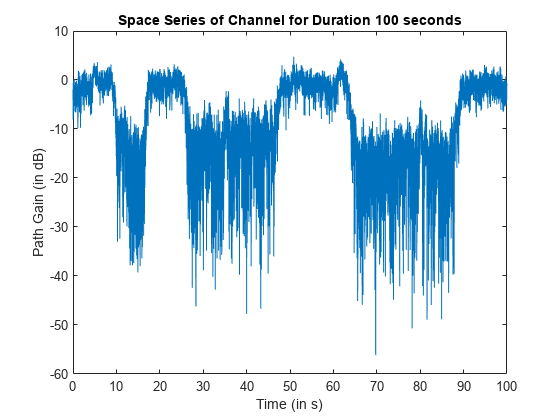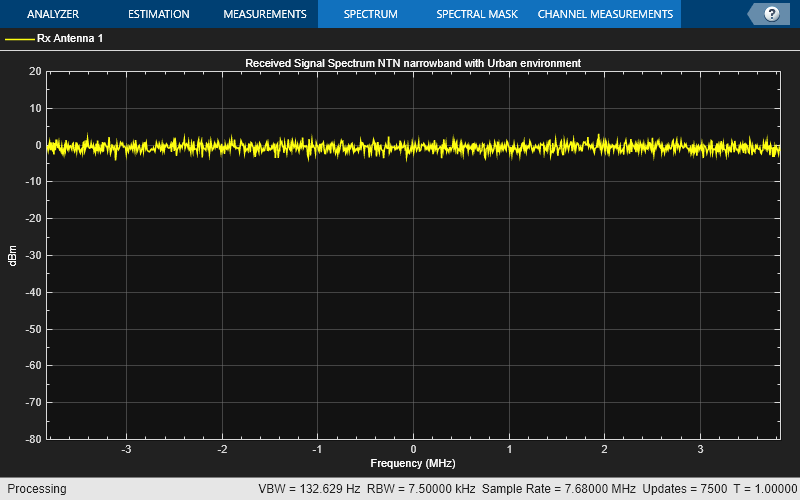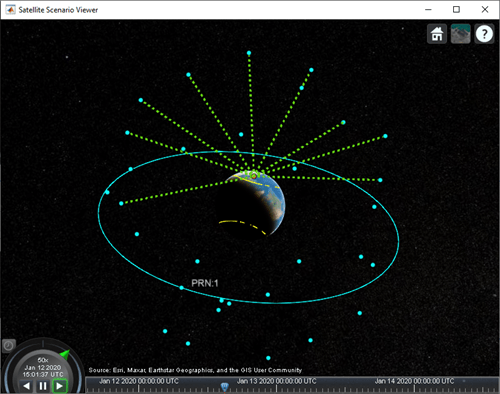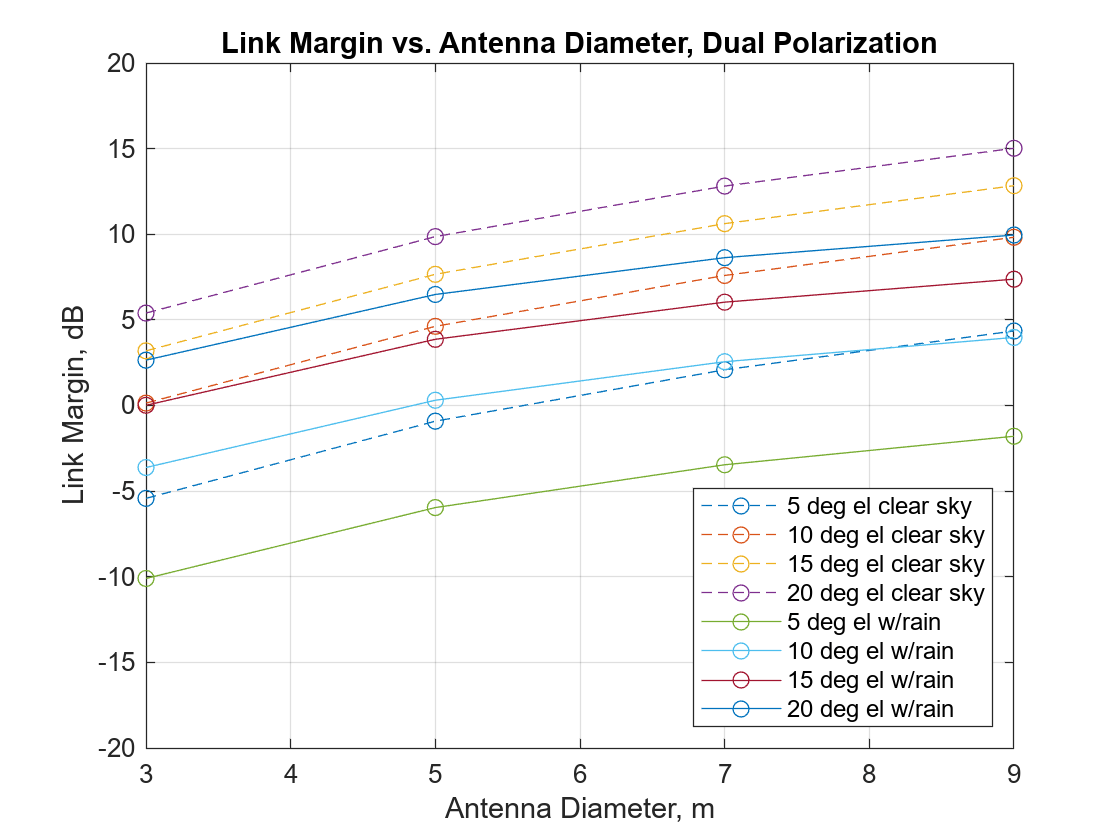RF Propagation and Channel Models
RF path propagation modeling describes the behavior of electromagnetic radiation from a point of transmission as the signal travels through the surrounding environment. Model RF propagation paths to calculate signal propagation through atmospheric gases, rain, fog and clouds, and tropospheric scintillation. You can also calculate outage probability due to rain attenuation with site diversity.
Channel modeling describes the over-the-air environment in communications system links. Analysis of propagation and channel modelling is essential in understanding how electromagnetic waves incur losses from a transmitter to a receiver in different scenarios. Model and visualize noisy single input single output (SISO) channels that have Rician or Land Mobile Satellite (LMS) fading profiles.
Functions
p618PropagationLosses | Calculate Earth-space propagation losses, cross-polarization discrimination, and sky noise temperature (Since R2021a) |
p618SiteDiversityOutage | Calculate outage probability due to rain attenuation with site diversity (Since R2021a) |
satelliteCNR | Carrier-to-noise ratio for configured satellite link budget parameters (Since R2022b) |
Objects
etsiRicianChannel | Filter input signal through multipath ETSI frequency-flat Rician fading channel (Since R2021a) |
lutzLMSChannel | Filter input signal through Lutz LMS frequency-flat fading channel (Since R2022b) |
dsocPoissonChannel | Create a deep space optical communications Poisson channel (Since R2023a) |
p618Config | Create P.618 configuration object (Since R2021a) |
p618SiteDiversityConfig | Create P.618 site diversity configuration object (Since R2021a) |
p681LMSChannel | Filter input signal through ITU-R P.681-11 LMS frequency-flat fading channel (Since R2022a) |
satelliteCNRConfig | Carrier-to-noise ratio configuration parameters (Since R2022b) |
Topics
- Earth-Space Propagation Losses
Calculate the Earth-space propagation losses for the design of Earth-space systems.




